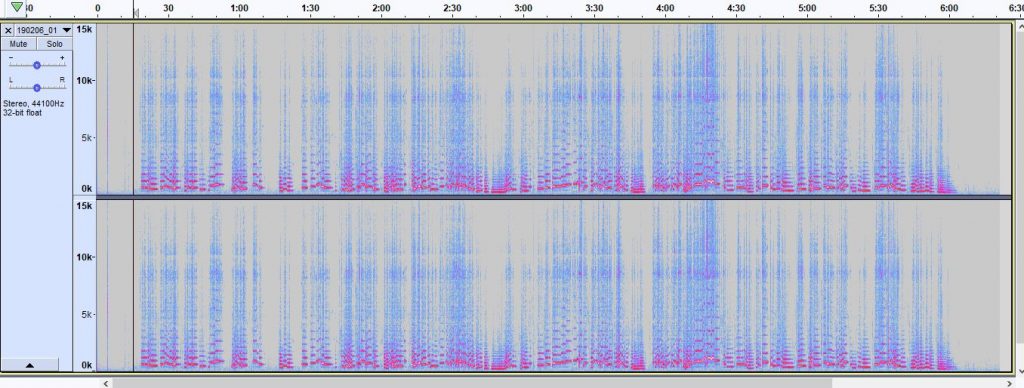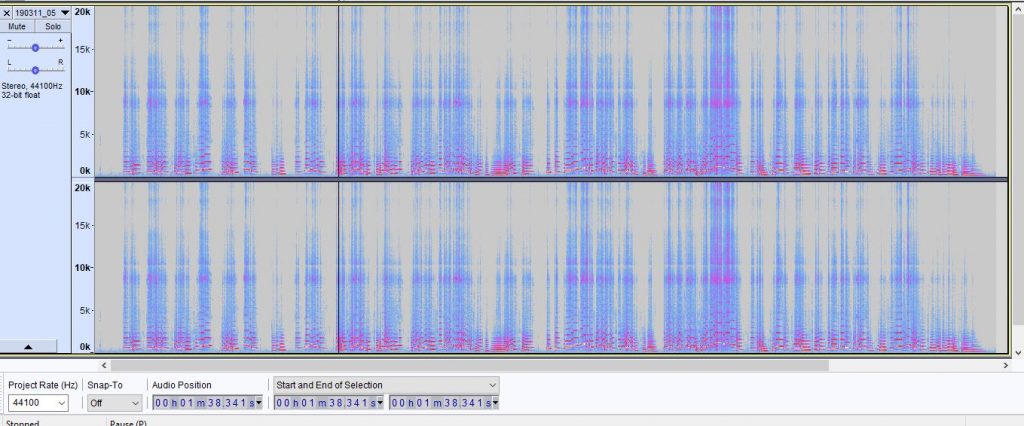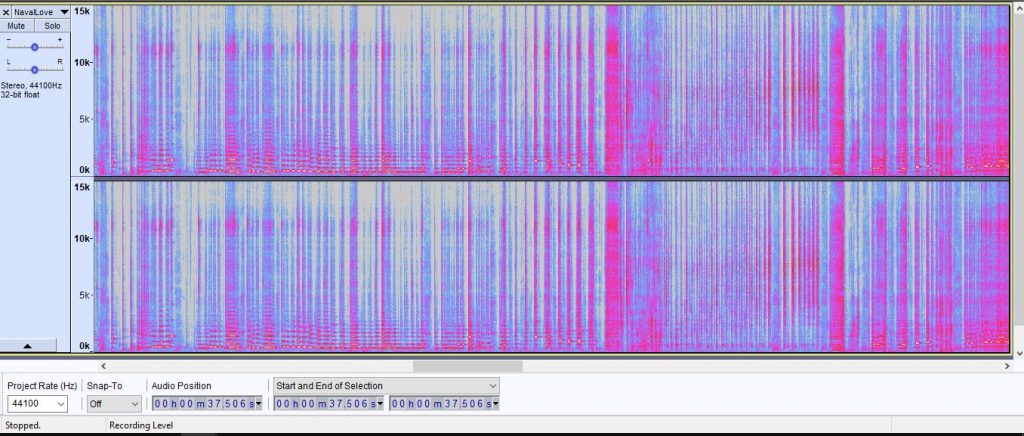So, looking through spectral analysis of my different flutes, I notice a strange dip around 10K on my alto flute. It’s as if someone ran a notch filter right at that frequency. (It’s an alto with a straight headjoint, not a curved one.) Here are the examples. They are raw, not processed, all recorded on the same microphone and digital recorder.
This shows an example of my alto flute playing in a small room. It looks like a notch filter around 10K:

The next shows the same the alto flute, same music, same equipment, in a different room. The same dip around 10K and here the bulge just under it is more visible. (This one has the view up to 20K.)

For comparison, here is an example of my bass flute playing, same equipment, same room as the previous example:

And for another comparison, here is my C flute sound, same equipment, same room as the previous 2 examples:

Does anybody know what is going on? Any alto flute makers of headjoints know if this is something typical? Any alto flute players want to compare?
[Edit: I received an answer on Facebook from Dave Gedosh suggesting that it has to do with the construction of the flute. Then I received an email from a reliable source that gave this explanation:
I have a theory that the notch you see may be due to the natural resonance of the flute type you are playing due to diameter of the flute.
Not knowing room temp nor altitude I predicted various notches for various flutes in a linear fashion based on your observed notch .
Alto flute length 34”, 1” diameter, wavelength 13khz @ 20 deg c, sea level Seen at At 10 kHz
C flute length 26 1/2” ,3/4” diameter 18khz @ 20 deg c , sea level Predict 14 kHz

Bass flute length 52” ,1 3/4” diameter 7.72 kHz Predict 6 kHz Note bass flute notch is lower (allowing a lower range ? 🙂 ) {edit: is the curvature of the headjoint taken into account here?}
Maybe I am wrong but the coincidence of the wavelength and the flute diameter seems too much to ignore.]
Leave a Reply